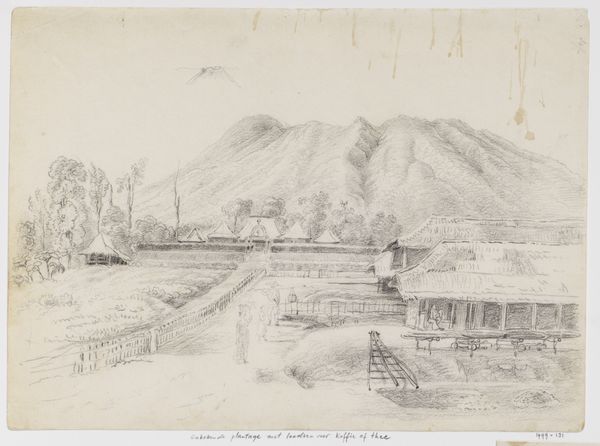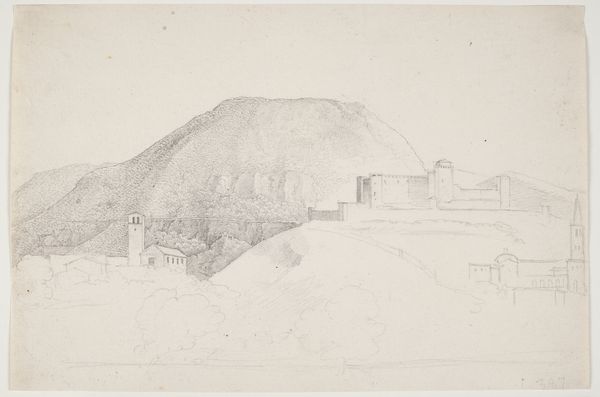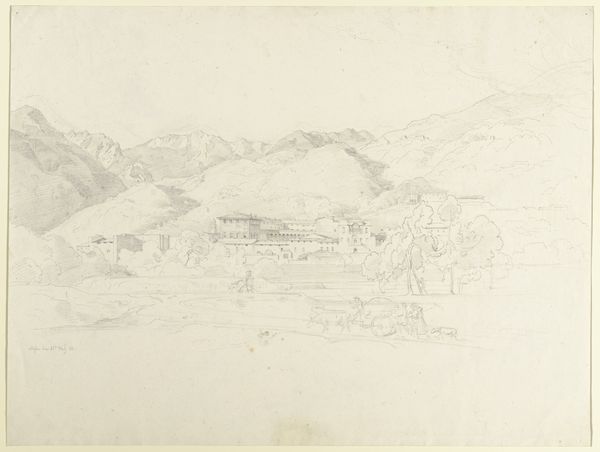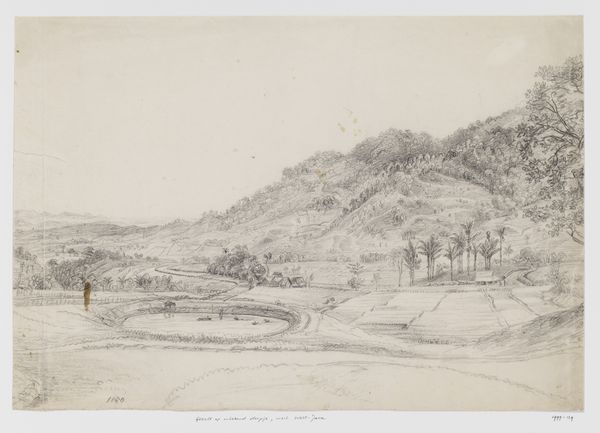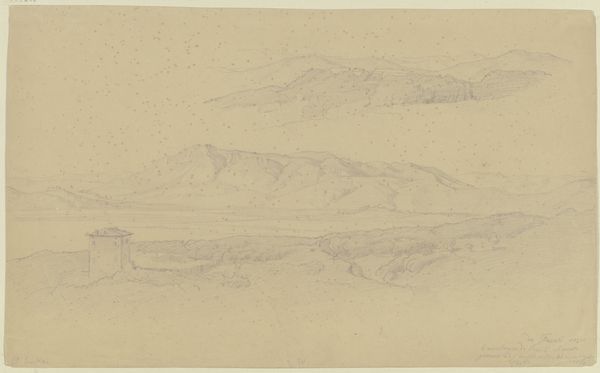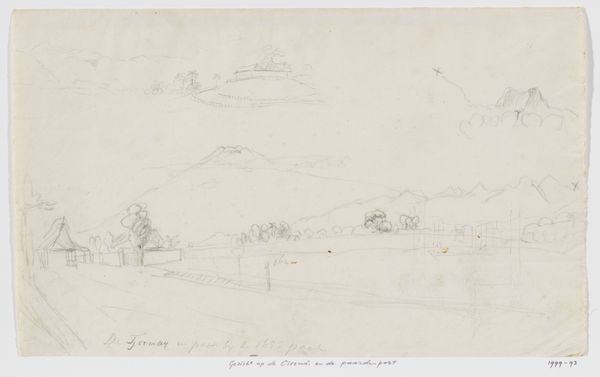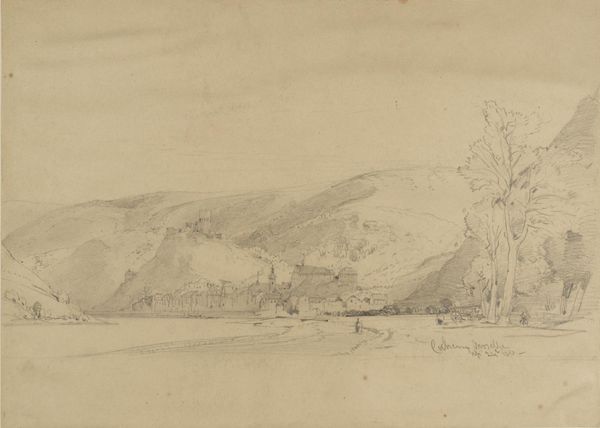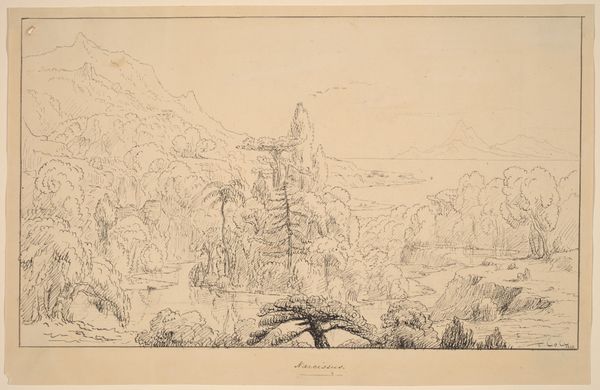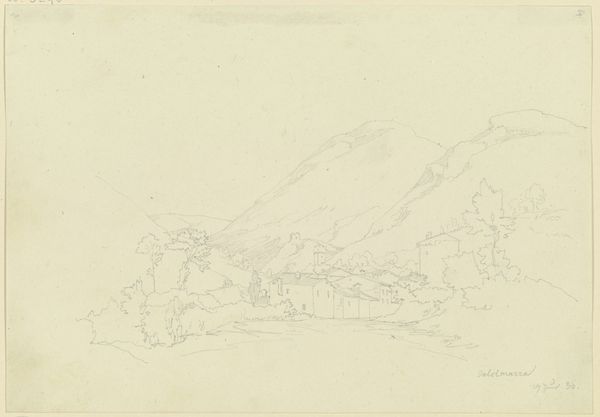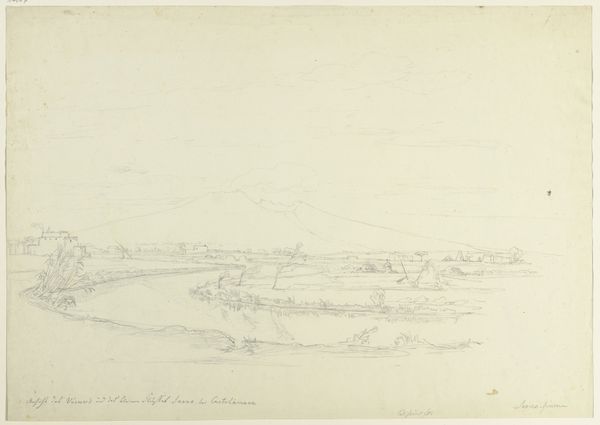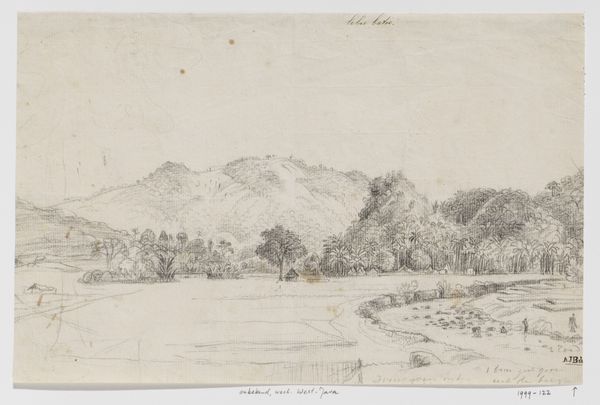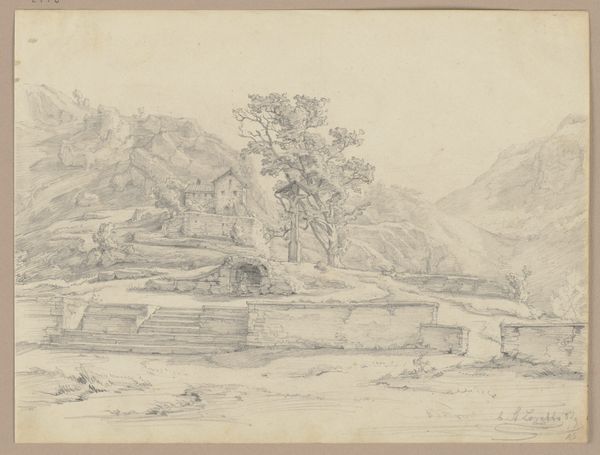
Landschap en buitenverblijf Argalingga op de Ciremai, West-Java c. 1816 - 1846
0:00
0:00
drawing, pencil
#
pencil drawn
#
drawing
#
pencil sketch
#
landscape
#
etching
#
pencil drawing
#
romanticism
#
pencil
#
pencil work
Dimensions: height 211 mm, width 327 mm
Copyright: Rijks Museum: Open Domain
Curator: Up next, we have "Landscape with the Argalingga Residence on the Ciremai, West Java", a drawing attributed to Adrianus Johannes Bik, created sometime between 1816 and 1846. It's a delicate pencil sketch, currently held here at the Rijksmuseum. Editor: My first thought? The weight of that mountain! It dominates the entire composition. There's a feeling of the smallness of humanity in relation to nature’s grandeur, even in this unfinished sketch. Curator: That feeling resonates strongly with the Romantic movement, which idealized nature while also reflecting on colonialism’s impact on people’s perceptions of previously uncharted lands. These landscapes become both documents and romantic projections. How are colonial power dynamics implicit in that feeling of smallness that you mentioned? Editor: Precisely. Here, we see evidence of that power. There's a highly structured residence with the controlled landscapes, all seemingly subordinate to this looming mountain. What does this juxtaposition mean? It’s also difficult to separate this image from that colonial narrative, with its exploitation of land and resources. Curator: And yet, Bik clearly took the time to depict the landscape in considerable detail, rendering gradations of shade with pencil strokes and cross hatching. It’s not just about extraction and control. It's about observing and categorizing, creating a visual inventory. This was a time when institutions were developing a strong taste for the ‘natural history’ of colonies. Editor: True, we also see that interest expressed in the rendering of native architectural styles within the scene, offering valuable ethnographical insight despite its colonial context. Look at the gate structure as a strong indication of this approach. Curator: I agree. Its very precision invites us to consider not just colonial impositions but the cultural landscapes that predated them, allowing us to examine their visual legacy. We must understand colonial depictions not in isolation but as inherently complex, even conflicted cultural artifacts that provide insight into power and representation. Editor: Ultimately, this modest drawing offers an intersectional view, inviting reflection on empire, landscape, and identity, prompting us to reconsider the role of the colonizer within the scope of landscape art history. Curator: Indeed. Hopefully, these perspectives equip visitors with an enriching, multidimensional approach.
Comments
No comments
Be the first to comment and join the conversation on the ultimate creative platform.
